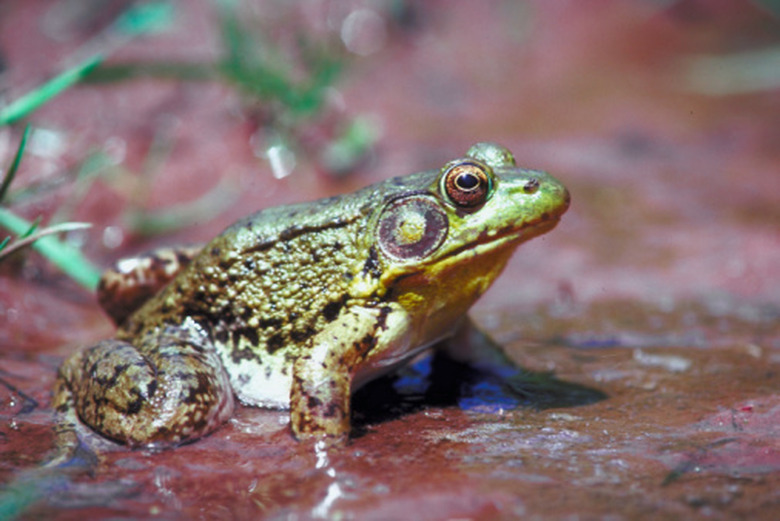External Nares In Frogs: What Are Nares & How Do They Work?
Nares are the nostrils of a frog. Frogs have both external and internal nares that they use to bring air into their mouth to breathe when they are not in water. They have other methods of breathing when they are in water. Frogs also have the ability to breathe through their skin.
External and internal nares anatomy
External and internal nares anatomy
The external nares on a frog are visible on the frog's nose. They look like small slits on the top of his snout. This positioning means that the frog can breathe air while floating on the surface of the water as well as when he is on land.
The internal nares of a frog are small slits located on the roof of the frog's mouth. They are located behind the maxillary teeth, which are located around the outside of the mouth, and the vomerine teeth, which are located on the roof of the mouth.
How frogs breathe
How frogs breathe
Similar to many other animals, frogs have lungs and breathe in and out through their nostrils, or nares. However, frogs don't have a rib cage or diaphragm, so the way that they get air into their lungs is quite different. To inhale, the frog opens her nostrils and opens her lower mouth and throat. Once the mouth is full of air, the frog closes her nares and contracts the mouth to gulp air down the glottis, the organ that connects the frog's mouth and lungs.
The lungs function much the same way as a human's lungs. Oxygen enters the bloodstream, and carbon dioxide leaves the bloodstream to be exhaled. Frogs exhale by reversing this process. The lungs contract to send the air back into the mouth. Then, the frog opens the nares and contracts her mouth to push out the air.
Alternative nares breathing method
Alternative nares breathing method
Frogs are able to use nares to breathe without inhaling the air all the way to the lungs. This is because the roof of their mouth has a lining that allows gases to move across it. This means that when the frog opens his nares and brings air into the mouth, he can get oxygen into the blood and get rid of carbon dioxide from the blood through that surface. He can then exhale without ever having moved air into his lungs.
Frog skin breathing adaptation
Frog skin breathing adaptation
While nares are used to breathe while on land, frogs are amphibians and have unique adaptations to survive both on land and in water. Frogs also have the ability to breathe through their skin. They use this method exclusively when submerged in water, but they can also breathe through their skin while on land.
Frogs are known for their slimy skin, and this slime is one of the things that keeps the skin moist and allows them to absorb oxygen. They also have thin skin that is supplied with plenty of capillaries near the surface. Oxygen and carbon dioxide can move through the skin and then into the capillaries.
Frog vs. tadpole respiration
Frog vs. tadpole respiration
Tadpoles are not born with lungs. This means that only adult frogs use nares to breathe air. Tadpoles, on the other hand, have gills. The tadpoles take water through their mouth, and when the water passes over the gills, gases are exchanged. As the tadpole develops into adulthood, skin grows over the gills, and the frog starts using the other methods of respiration.
